Unakite
Unakite is an interesting semi precious stone comprised of an amalgamation of Epidote, clear Quartz, and green Feldspar. It has a bright contrasting pink and green colour.
It is commonly found on the shores of Lake Superior, on the US / Canadian border. It is found in several other locations worldwide, including Sierra Leone, Brazil, China, and the state of Virginia.
Showing all 8 results
-
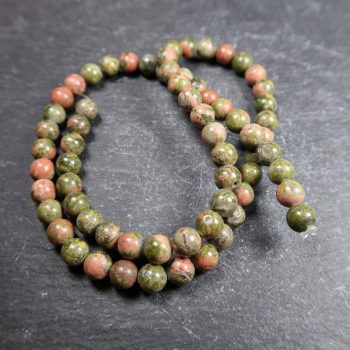
Unakite bead strands
Price range: £3.00 through £4.00 -
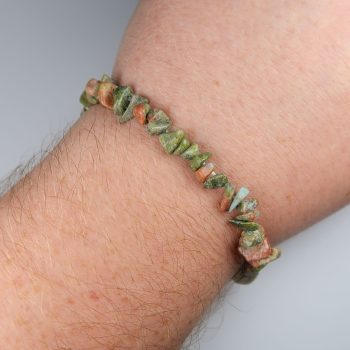
Unakite Bracelets
£1.95 -
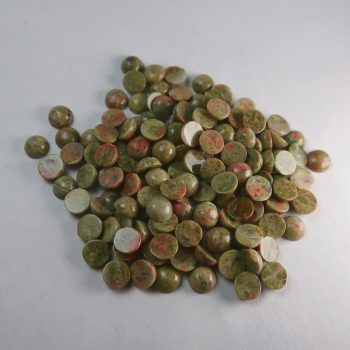
Unakite Cabochons
Price range: £1.50 through £7.00 -
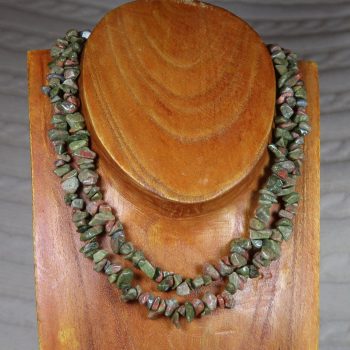
Unakite necklaces
Price range: £3.00 through £3.55 -
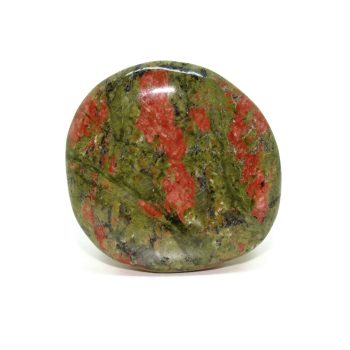
Unakite Palmstones
Price range: £3.00 through £4.00 -
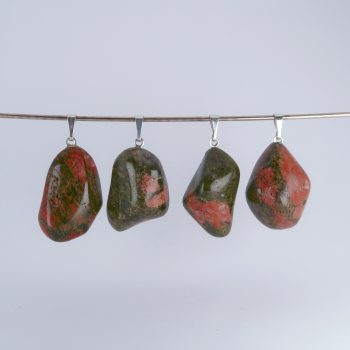
Unakite pendants
Price range: £1.50 through £2.00 -
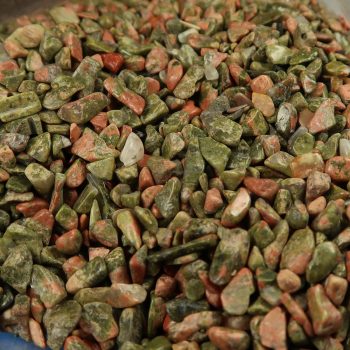
Unakite tumblechips
£2.00 -
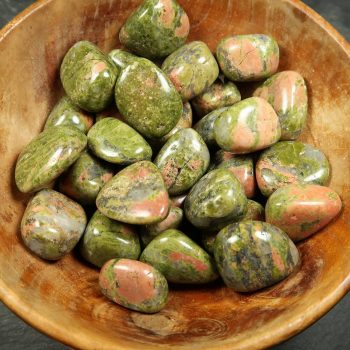
Unakite Tumblestones
Price range: £2.00 through £7.00
Appearance, Uses and History
Unakite gains its name from the Unakas mountains of North Carolina, USA.
Unakite is considered a semi precious stone, and is often used for jewellery making, particularly beads and cabochons. However, it is rarely found in commercial high street jewellery.
Lapidary artists may also carve eggs, spheres, and other shapes – a good polish shows off the contrasting colours very nicely. It is abundant, attractive, and relatively cheap as a material.
Unakite is rarely used as an architectural stone. It is used on the front steps of the Smithsonian Museum in Washington DC and as floor tiles in another area of the museum.
Locales
Unakite is found in Australia, Brazil, China, Sierra Leone, South Africa, and the USA.
Mineralogy
A type of Granite comprised of feldspar, epidote, and quartz.
Some material without any feldspar is referred to as epidosite.
Hazards and Warnings
Almost all rocks, minerals (and, frankly, almost all other substances on earth) can produce toxic dust when cutting, which can cause serious respiratory conditions including silicosis.
When cutting or polishing rocks, minerals, shells, etc, all work should be done wet to minimise the dust, and a suitable respirator or extraction system should be used.
Translations
Arabic:
Hindi:
Portuguese:
Bengali:
Indonesian:
Punjabi:
English:
Italian:
Russian:
French:
Japanese:
- ユナカイト
Spanish:
German:
- Unakit
Korean:
Thai:
Gujurati:
Mandarin and Traditional Chinese:
- 綠簾花崗石
Urdu:
